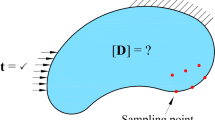Summary
When making normal-force measurements in cone-and-plate, parallel plate, or Eccentric Rotating Disc (E. R. D.) geometries, a correction for inertial effects is often imperative. This is especially true when making measurements at high rotation speeds, using large diameter tools, or when the material under test generates little normal-force (e. g. for fluids of low viscosity and elasticity).
Theoretical expressions for this correction are quoted herein and are tested for a variety of Newtonian fluids and test geometries. These are found to be accurate to within an experimental error of maximal 4%. Surface tension has no influence. The correction for parallel plate and cone-and-plate is different from that for E.R.D.
It is also demonstrated herein that failure to make this correction can lead to apparent first normalstress differences which are greatly in error and even negative for polymer solutions. This is illustrated with an example using aqueous polyacrylamide solutions.
Zusammenfassung
Wenn Normalkraftmessungen in Kegel-Platte-, Platte-Platte-Anordnungen oder in exzentrisch rotierenden Scheiben durchgeführt werden, ist meistens eine Korrektur für die auftretenden Trägheitseffekte erforderlich. Dies ist besonders dann notwendig, wenn die Messungen bei hohen Rotationsgeschwindigkeiten sowie großen Radien der Meßsysteme durchgeführt werden oder bei Substanzen, die unter den Testbedingungen nur kleine Normalkräfte zeigen (z.B. bei Lösungen mit niedriger Viskosität und geringer Elastizität).
Theoretische Ausdrücke für diese Korrekturen werden angegeben. Diese wurden für eine Anzahl von newtonschen Lösungen und für verschiedene Meßanordnungen getestet. Die experimentellen Ergebnisse zeigen — bei einem maximalen Fehler von 4% —, daß die Theorie gut bestätigt wird. Die Oberflächenspannung hat keinen Einfluß auf die Ergebnisse. Die notwendige Korrektur in exzentrisch rotierenden Scheiben ist nicht gleich der in Kegel-Platte- oder Platte-Platte-Anordnungen.
Es wird darüber hinaus gezeigt, daß der Fehler bei der Bestimmung der 1. Normalspannungsdifferenz in Polymerlösungen extrem große Werte annehmen kann. Die 1. Normalspannungsdifferenz kann negativ werden, wenn die erforderliche Korrektur nicht durchgeführt wird. Dies wird am Beispiel von wäßrigen Polyacrylamidlösungen demonstriert.
Similar content being viewed by others
Abbreviations
- v 1 :
-
first normal-stress difference (dyn/cm2)
- v 2 :
-
second normal-stress difference (dyn/cm2)
- \(\dot \gamma \) :
-
shear rate (sec−1)
- θ 0 :
-
cone angle (rad)
- ω :
-
speed, angular velocity (rad/sec)
- r, R :
-
radius (cm)
- F z,F z0 :
-
normal force (dyn)
- P 0,P :
-
pressure (dyn/cm2)
- ρ :
-
density (g/cm3)
- m, K, b :
-
constants
- C. & P.:
-
cone-and-plate geometry
- P. P.:
-
parallel plate geometry
- E. R. D.:
-
eccentric rotating disc geometry
- η :
-
viscosity (poise)
References
Miller, M. J., E. B. Christiansen Amer. Ind. Chem. Engg. J.18, 600 (1972).
Walters, K. Rheometry (Halsted Press, New York 1975).
Adams, N., A. S. Lodge Phil. Trans. Roy. Soc.A 256, 149(1964).
Greensmith, H. W., R. S. Rivlin Phil. Trans. Roy. Soc.A245, 399 (1953).
Macosko, C. W., W. M. Davis Rheol. Acta13, 818 (1974).
Author information
Authors and Affiliations
Additional information
On leave from Institut für Chemische Technologie, Technische Universität Braunschweig (BRD)
With 3 figures and 1 table
Rights and permissions
About this article
Cite this article
Kulicke, W.M., Kiss, G. & Porter, R.S. Inertial normal-force corrections in rotational rheometry. Rheol Acta 16, 568–572 (1977). https://doi.org/10.1007/BF01525657
Received:
Issue Date:
DOI: https://doi.org/10.1007/BF01525657




